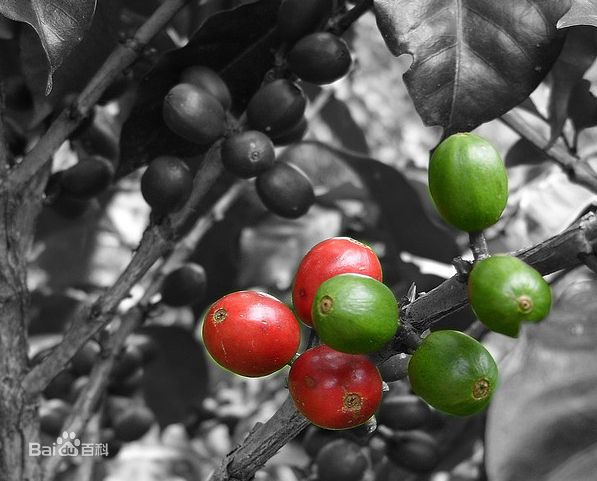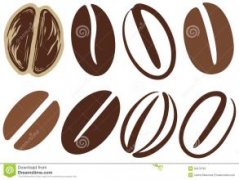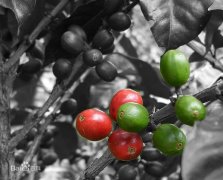Understand Brazilian Coffee and enter Brazilian boutique Coffee products
It is unique that growers from each producing area will study and develop local processing techniques according to the characteristics of the local environment, and it is Dangdu's unique raw bean processing technology that makes coffee tastes different from one place to another. The treatment of raw beans is like the brewing process of beer, different methods will lead to different tastes of coffee. Most of us have some knowledge about natural solarization, honey treatment, washing and other processing technology. if you are a beginner, please refer to the professional coffee knowledge books, from which you can learn a lot about the basics of raw bean treatment.
Today, I would like to discuss with you in depth the nuances of various raw bean processing processes. Brazil has always been one of my favorite producing areas, so today I will take Brazil as the theme. I would like to explain to you how the local people pick and handle the coffee fruit during the harvest season. One of the reasons for Brazil's leading global coffee picking and processing technology is the high level of mechanization in the Brazilian coffee growing industry, where labor costs remain high around the world. Mechanization is essential for the labor-intensive industry of coffee cultivation. Most of Brazil's coffee is picked mechanically, while the rest of the country uses "peeling" (that is, peeling off the coffee fruit on the whole branch at once). For those who are used to picking carefully, Brazil's fruit-picking techniques are a little barbaric. You may think this is a departure from the nature of boutique coffee, but as long as you have tasted Brazilian coffee, you will not doubt it.
The Brazilian coffee industry follows the principle of picking first and screening later, but in other Latin American countries, people pick only fully ripe fruit, and if it is not mature enough, growers will leave the fruit on the tree. Why is there such a big difference between the two methods? The reason lies in the picking and treatment of raw beans. First, in smaller boutique coffee countries other than Brazil, it is almost impossible to screen raw coffee beans after picking, so workers must ensure that coffee is strictly screened at the time of picking. Second, pickers in other countries pick coffee when the sugar content reaches 19-23:00, while Brazilian growers start picking when the sugar content reaches 23-30. The fruit whose sugar content reaches this value is extremely sweet and the fruit maturation is almost perfect. Brazilian pickers have a lot of experience. They will begin to pick the fruit when the number of green fruits on the coffee tree is the least, and ensure that the fruit is overripe.
The coffee beans have all fallen from the tree. This method is very demanding in the eyes of workers, and only workers with enough experience can do perfect picking.
The four most common treatment methods of Brazilian coffee are natural solarization, desizing, semi-washing and water washing, among which natural solarization is the most popular. Natural solarization is very popular in Brazil because the harvest seasons in Brazil's two main producing areas, Serrado Minero (CerradoMineiro) and Mogiana Paulista (Mogiana Paulista) are both dry seasons of the year.
Natural solarization is very different from the water washing used in other Central American countries and Colombia. Since the word "Unwashed" does not fully summarize the essence of this treatment, Brazilians eventually chose the same term "Natural" as Ethiopian coffee. Note, however, that the natural sun in Brazil is different from the traditional Ethiopian sun. What Brazilians call "natural sun" refers to the process of coffee picking and non-traditional processing, because Brazilians allow coffee to fully absorb sunlight on the branches and fully mature.
In Brazil, people dry the freshly picked fruit on the terrace, and the dried fruit is called "Boia" (English "ball", that is, "ball"). As I said before, all coffee is picked unpicked, so many coffee fruits are overripe during drying and dry like raisins. In more modern plantations, workers screen the coffee and peel off the immature fruit before drying. The method is to put all the fruit in a water tank, and the immature fruit floats on the water because of its light weight. Workers can use siphon equipment to remove the floating fruit. But in relatively backward plantations, workers do not have enough cash equipment to completely peel off immature fruit, which is why many Brazilian sun-cured coffee are mixed with immature beans.
Traditionally, sun-treated coffee usually tastes of leather, tobacco and wood, but Brazil's natural sun gives the coffee a sweet taste and a balanced fruit aroma. Dr. Flavio Flavio Borem, from the Federal University of Lavelas (UFLA), has conducted in-depth research on natural sun treatment of raw coffee beans. According to his theory, when using the natural sun method to treat raw coffee beans, in order to ensure the high quality of coffee, people must strictly control the metabolic rate of coffee beans in the drying process, in order to maximize the sweetness, taste complexity and mellow taste of coffee. Only by strictly controlling the external temperature in the drying process and the speed of fruit drying, can people ensure the integrity of coffee cell structure. During the drying process, the cell wall of coffee cells is easily damaged. Once the cell structure is destroyed, the quality of coffee can not be guaranteed.
Next, let's talk about the desizing method. The desizing method was introduced to Brazil 25 years ago by Pinhalense, a well-known machinery and equipment manufacturer. Desizing is the second most popular way to treat raw coffee beans in Brazil, and Brazilians like to call it "Cereja Descascado" ("Descascado" means "peel" and "Cereja" means "fruit"). In Central American countries, desizing is also known as honey treatment. When using this method to deal with raw beans, the desizing machine is essential. The coffee treated by this method is extremely sweet and unique. The desizing machine separates the peel and pulp of the coffee fruit from the raw beans. After the desizing step is completed, the mucous membrane on the surface of the raw bean is washed to an ideal level with water before drying. What is unique about this method is that raw beans do not have to be fermented. As there is still a small amount of mucous membrane attached to the surface of raw beans, the drying process of raw beans must be fast to prevent coffee from spoiling and mildew. Once dried, raw beans are placed in a wooden box called Tulhas for a period of time to make the coffee taste and aroma more constant.
Semi-washing is now an outdated method of raw bean treatment in Brazil, which is easy to be confused with desizing, but in my opinion, semi-washing is unique. The coffee treated by semi-washing method has a very mellow taste and high sweetness. this method requires the grower's operation technique and experience very high. if something goes wrong, the coffee will become difficult to swallow. Like the desizing method, people first use a desizing machine to desize the fruit, but the difference is that the semi-washing method requires the removal of as much mucous membrane as possible from the peel, pulp and surface layer of raw beans. In Central America, people wash the fruit directly with a washing machine after desizing, so this method is also known as mechanical washing. The processed raw coffee beans are very clean and can begin to dry without fermentation. Semi-washed coffee dries quickly at constant temperature, so it tastes purer, less moldy and fruity than other slow-drying coffees. Finally, let's talk about washing. Although many Brazilian coffee growers have recently expressed great interest in washing, the demand for this kind of coffee is still not high at home and abroad. The reason is that washed Brazilian coffee has a poor reputation in the international market, and washing technology in Brazil started relatively late, not yet mature. The treatment of washed coffee is very similar to that of semi-washed coffee, but it needs fermentation to remove the mucus from the surface of raw beans. Washed coffee usually has a pure taste and pleasant acidity.
These are the four most common methods of raw bean treatment in Brazil. once the treatment is completed, there is only parchment left on the outside of the raw bean, and the coffee will be finally screened to meet the standard of fine coffee. Coffee beans with parchment are sent to a unified drying plant, where coffee is finally sorted, bagged and ready for export. Factory workers first use vibration screening to grade coffee according to the density of raw beans. You know, density is one of the important criteria to measure the quality of coffee. The graded coffee beans will be cleaned again, and the cleaned coffee beans will be sent to the laboratory for final color grading. The chromometer uses a laser to detect imperfections or stains on the surface of coffee beans. Generally speaking, in Brazil, the level of mechanization of raw bean sorting is very high. Machining can not only avoid unnecessary mistakes, but also help solve the problem of labor shortage caused by high wages.

Important Notice :
前街咖啡 FrontStreet Coffee has moved to new addredd:
FrontStreet Coffee Address: 315,Donghua East Road,GuangZhou
Tel:020 38364473
- Prev

How to preserve Coffee Fine Coffee
Why is storage so important? The wonderful ingredients in the coffee have been drifting away, from the coffee fruits harvested from the trees, from the raw beans in the processor, especially from the cooked beans. These factors that contribute to the quality of coffee can also be destroyed by oxidation, resulting in the loss of flavor and aroma. Treat the storage of coffee beans in order to retain as much aroma as possible in the last cup
- Next

Understand Brazilian Coffee and enter Brazilian boutique Coffee products
It is unique that growers from each producing area will study and develop local processing techniques according to the characteristics of the local environment, and it is Dangdu's unique raw bean processing technology that makes coffee tastes different from one place to another. The treatment of raw beans is like the brewing process of beer, different methods will lead to different tastes of coffee. Most of us are right about ourselves.
Related
- Beginners will see the "Coffee pull flower" guide!
- What is the difference between ice blog purified milk and ordinary milk coffee?
- Why is the Philippines the largest producer of crops in Liberia?
- For coffee extraction, should the fine powder be retained?
- How does extracted espresso fill pressed powder? How much strength does it take to press the powder?
- How to make jasmine cold extract coffee? Is the jasmine + latte good?
- Will this little toy really make the coffee taste better? How does Lily Drip affect coffee extraction?
- Will the action of slapping the filter cup also affect coffee extraction?
- What's the difference between powder-to-water ratio and powder-to-liquid ratio?
- What is the Ethiopian local species? What does it have to do with Heirloom native species?

